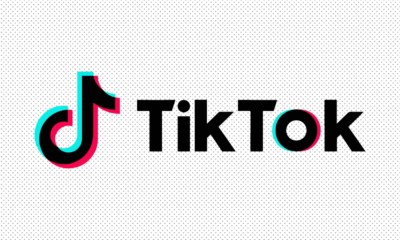Technology
What Is Prompt Tuning & How Does It Work?


The landscape of AI enterprise applications has significantly changed thanks to foundation models, and their rapid growth is laying the groundwork for the next wave. Foundation models are sizable artificial models that have been pre-trained on absurdly large amounts of unlabeled data, typically through self-supervising learning. As a result, these models can be tailored for a variety of purposes, ranging from the analysis of legal contracts to the detection of fraud in financial documents.
Redeploying a previously trained model to carry out specialized tasks was thought to be best accomplished through fine-tuning. Instead of creating a brand-new model from scratch, you were used to gathering and labeling examples of the target task to improve the model. Prompt tuning, however, has emerged as a more straightforward, workable, and energy-efficient alternative.
What Exactly Is Prompt Tuning?
Let’s begin with the basics: Just what does prompt tuning entail? The process of prompt tuning entails feeding your AI model front-end prompts pertinent to a particular task. These cues can be anything from a few extra words added to the embedding layer to numbers generated by humans or artificial intelligence (AI). Control the model to make accurate predictions with timely adjustments. Data-poor organizations can quickly adapt it to specific tasks without changing model weight or billions.
Did you know that by retraining an AI model without retraining, you can reduce computation and power consumption by at least 1000x, saving you thousands of dollars?
David Cox, co-director of the MIT-IBM Watson AI Lab and head of research on artificial intelligence at IBM, says that on-the-fly tuning enables the creation of powerful models that can be tailored to specific needs. You also have the ability to experiment and explore faster.
The prompt-tuning process started with large language models and gradually grew to incorporate foundation models like transformers that deal with sequential data types like audio and video. There are many different types of prompts, including speech streams, still images, videos, and short text passages.
Prompt for Specialized Tasks
Prompt engineering was a term used to describe hand-designed prompts long before prompt tuning became a reality.
Let’s look at a language model used for translation tasks as an example. You feed details into the system, including data on the intended task. You could say, “Translate from English to French.” After receiving the command “cheese,” the model responds with its prediction, “fromage.” The model is primed to recall additional French words from its memory banks thanks to this manual prompt. If the task is challenging enough, numerous prompts may be required.
- When OpenAi’s ambitious GPT (Generative Pretrained Transformer), a language model almost ten times larger than any of its predecessors, was released, prompt engineering became mandatory.
- Researchers from OpenAI discovered that GPT-3 successor, which had 175 billion parameters, was GPT’s successor and that it could carry out specialized tasks with just a few words introduced at inference time. GPT-3 performed just as well in this situation, where there was no need for retraining, as a model that had been adjusted using labeled data.
Introduction of Prefix Tuning
The hand-made prompts eventually disappeared from the system and were replaced by superior AI-designed prompts that were made up of strings of numbers. A year later, Google researchers formally unveiled the “soft” prompts created by AI, which outperformed the “hard” prompts created by humans.
Prefix-tuning, another automated prompt-design technique that allowed the model to sequentially learn tasks, was introduced by Stanford researchers while prompt tuning was still being evaluated. Prefix-tuning was used to increase flexibility by combining gentle prompts and prompts that are fed into the layers of the deep learning model. Although prompt tuning is thought to be more effective, both methods have the benefit of allowing you to freeze the model and avoid the pricey retraining.
possibility of discovering optimal prompts It could provide justification for why it selected those particular embeddings. Panda clarified this “You’re learning the prompts, but there’s little to no visibility into how the model is helping,” stated Panda. It remains a mystery.
New Prompt-Tuning Apps
Foundation models are pursuing new opportunities and discovering new enterprise applications, ranging from drug and material discovery to car manuals. On the other hand, prompt tuning is keeping up with them and gradually evolving with them.
The versatility of foundation models is another quality. Identifying objectionable remarks and responding to customer inquiries are examples of times when foundation models must quickly pivot. Smart solutions are being developed by researchers. Instead of creating a special prompt for every task, they are figuring out how to make generic prompts that are simple to reuse.
- Panda and his team will present their Multi-task Prompt Tuning (MPT) method at the International Conference on Learning Representations (ICLR) in a paper that will be published soon. MPT outperformed other methods as well as models that were tuned using task-specific data.
- According to Panda, MPT enables you to save money because you can customize that model for less than $100 as opposed to spending thousands of dollars to simply retrain a 2-billion parameter model for a particular task.
Given that an AI model is constantly picking up new tasks and ideas, the capacity to locate prompts instantly is another area that still needs improvement. It is a given that the model would need to be updated with the new data when it comes to handling new knowledge. Catastrophic forgetting can occasionally happen. This group claims that outdated information has been replaced.
Techniques for Fighting Bias
As a tool to lessen algorithmic bias, prompt tuning excels. Due to the fact that most AI models are built using real-world data, it stands to reason that they pick up on societal biases and make decisions that are unfair in every way.
- In order to eliminate racial and gender bias, IBM researchers recently presented two papers at the 2022 NeurIPS conference. These papers used AI-designed prompts in large language and vision models.
- One of the techniques used by the researcher, FairIJ, identifies the training set’s most biased data points and gives the model the ability to exclude them with prompts. For salary prediction, a model tuned with FairIJ produced results that were more accurate and less biased than the majority of the top bias-mitigation techniques.
- An AI that has been trained in beauty magazines is given gender-sensitivity training via prompts in a different technique called FairReprogram.
In a different case, IBM researchers decided to add an AI-designed border of black pixels to a woman’s photo with brown hair to reorient a classifier that had unintentionally learned to associate only women with blonde hair as “women.” They discovered that adding brown-haired women to the model’s conception of women was made possible by the use of pixels.
Parting Thoughts
As a whole, prompt-tuning reorients or adjusts the behavior of the model while also drastically reducing the cost of adapting large models to new applications. Organizations can adapt their model to specialized tasks more quickly and sustainably with prompt tuning. Moreover, with the help of an efficient AI Development Services provider, everything will be smarter, quicker, more advanced, and more effective.
Author Bio:
Vishnu Narayan is a content writer, working at ThinkPalm Technologies, a software development and AI services provider focusing on technologies like BigData, IoT, and Machine Learning. He is a passionate writer, a tech enthusiast, and an avid reader who tries to tour the globe with a heart that longs to see more sunsets than Netflix!





 Technology2 months ago
Technology2 months agoWhy Adding Videos to WooCommerce Product Galleries is Essential in 2025



 General2 months ago
General2 months agoWhat Is Smart Construction? A Beginner’s Guide



 Technology1 month ago
Technology1 month agoHow to Send WooCommerce SMS Notifications for Orders



 Technology1 month ago
Technology1 month ago7 Essential TikTok Metrics to Track for Higher TikTok Views in 2025

 Model3 weeks ago
Model3 weeks agoTiffany Stratton: Biography, Wiki, Age, WWE Career, Net Worth, Before Fame, Boyfriend





 Technology4 weeks ago
Technology4 weeks agoTop 5 Tips for Using File Uploads in Your WooCommerce Store Efficiently

 Technology3 weeks ago
Technology3 weeks agoWhy Airlines Are Using Virtual Reality Services for Pilot Training



 General4 weeks ago
General4 weeks agoThe Hidden Costs of a DUI & How a Lawyer Can Help You Avoid Them




You must be logged in to post a comment Login